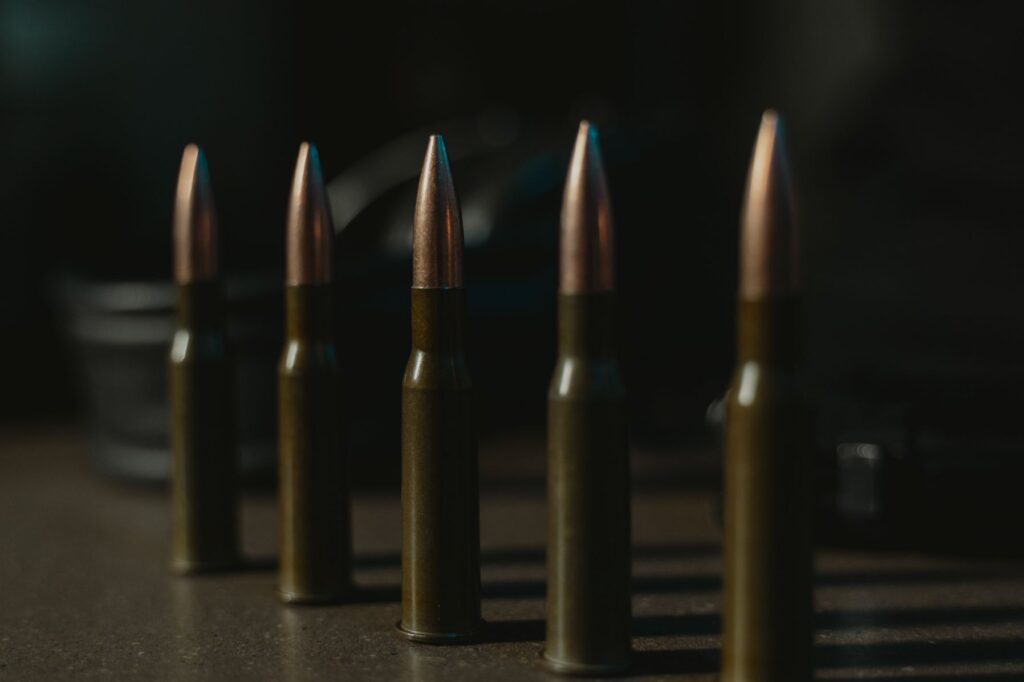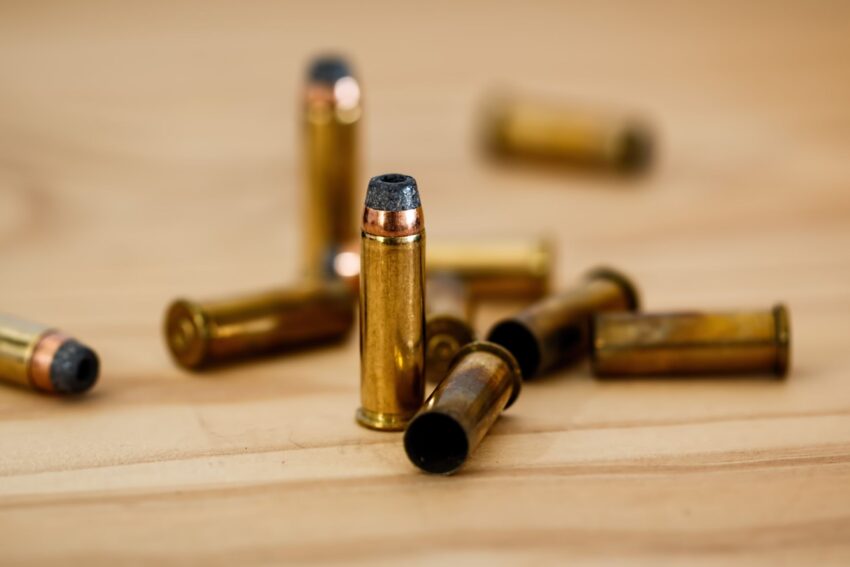Gun bullets travel quickly and far before striking an object because guns pack a lot of energy into a small space. Though most bullets are smaller than the size of your finger, they can still travel quite a distance. There are a number of things to take into account when calculating the bullet’s range: the caliber of the bullet, its type, the barrel length, the rifle, and even environmental factors. The bullet will be discussed for you in this article. Please keep reading.
How Do Guns Fire Their Rounds?
Up until you fire a bullet cartridge, it is intended to be (relatively) safe. The small explosive charge in the primer is ignited when you pull the trigger on a gun by a spring mechanism driving a metal firing pin into the cartridge’s back end.
The propellant, which makes up roughly two-thirds of a typical cartridge’s volume, is then ignited by the primer. The chemicals used in propellant burn quickly and produce a large amount of gas.
The bullet is forced down the barrel of the gun at an incredibly high speed (300 m/s or 1000 ft/s is typical in a handgun) when the gas suddenly expands to high pressure. The remainder of the cartridge stays put; only the bullet is discharged from the gun.
To make room for the following cartridge and shot, it must be ejected after firing (sometimes manually, sometimes automatically).
How Bullets Travel?
Gun barrels have spiral grooves cut into them that causes bullets to spin quickly as they exit the barrel. A gyroscope and a spinning bullet are similar: a sort of “stubborn” spinning wheel that always tries to keep turning the same way.
A spinning gyroscope will try to resist any tilting force you apply, and if you let go, it will quickly tilt back the other way. For this reason, it can be extremely difficult to swerve something from its course when it is spinning.
This concept is known as stability or gyroscopic inertia. The same principles apply to how a bullet operates: once it’s spinning, it follows a straighter path as it goes through the air, so it’s harder to deflect and much more likely to reach its target.
Nothing could be further from the truth than the idea that bullets fly in perfectly straight lines. As a bullet flies through the air, it is subject to numerous forces. Bullets do follow a roughly straight path over very short distances.
Gravity pulls them toward the ground as they travel longer distances, causing them to follow a slight downward curve. Additionally, complicating matters are the bullet’s gyroscopic motion and air resistance.
Usually, when a bullet is fired, recoil causes the shooter to shake the gun slightly. The combination of the motion of the bullet, gravity, air resistance, recoil, and spinning causes a bullet to fly through the air in a very intricate corkscrew pattern.
How Far Can Bullets Travel?
There are many other factors, such as weather, windspeed, trajectory, and so on, that will affect the range of each type of firearm and bullet. We’ll assume for consistency’s sake that you’ve selected a fairly standard shooting tool and are aiming for maximum range with whatever gun and bullet you choose.
The National Rifle Association states that if you’re shooting for distance, a 30-degree angle from horizontal is the ideal.

According to the NRA, a bullet can travel up to 2,130 yards, or about 1.2 miles, with a 9 mm handgun, which Guns.com lists as the most popular handgun. The Colt.45, the second most common handgun, has a range of about 1,850 yards, or just over a mile.
Handguns are obviously not intended for long-range shooting. The design of rifles makes them more accurate at a farther range. According to the NRA, the most common firearm has a maximum range of 3,840 yards or 2.2 miles.
This firearm is the infamous AR-15 rifle. If you have long-distance hunting on your bucket list, keep in mind that the chances of hitting a target at that distance are slim because the maximum range is much farther than the effective range.
According to the BBC, 3,870 yards, or just over 2.2 miles, is the greatest distance at which a gun has ever been used successfully. In 2017, an Islamic State fighter was killed in Iraq by a shot fired by a member of the Canadian special forces.
Which Elements Impact A Bullet’s Range?
There is no definitive answer as to the maximum range that a bullet can travel due to a number of mechanical and environmental variables. But we can obtain something of an average response by taking into account the range of a particular caliber in various situations.
Regarding the bullet itself, despite having the same size and caliber, different loads and types of bullets have significantly different ranges. The projectile’s weight, shape, and the type and quantity of explosives used in its casing can all have a significant impact on the projectile’s range.
Additionally, the type of weapon used to fire the bullet matters. The rifling of the barrel and the angle at which the gun is fired can also affect the bullet distance, and longer barrels generally have longer ranges.
Finally, environmental factors enter the picture; altitude, humidity, wind, and other weather conditions can slightly alter the range of a bullet.
How Far Will A Bullet Go Through Water?
In general, bullets are used in open spaces, but perhaps you’ve wondered if you could use guns in the water for fishing or hunting.
A gun will fire underwater, but it won’t be very efficient. Water’s pressure can significantly reduce a bullet’s maximum range because it is significantly denser than air.
Contrary to popular belief, faster bullets actually travel less distance when traveling through water. Additionally, the distance is shorter the pointier the tip.
Consequently, a 556 round will cover less ground in water than, say, a 45 ACP or a 7.62 AK round. A pointed bullet will travel between 50 centimeters and 4.5 meters, or roughly 5 yards, depending on the caliber and rifle.
With a round tip, a bullet can travel farther and have an effective range of up to 2.75 meters (3 yards).
Read More: How To Clean A Gun: A Complete Guide

